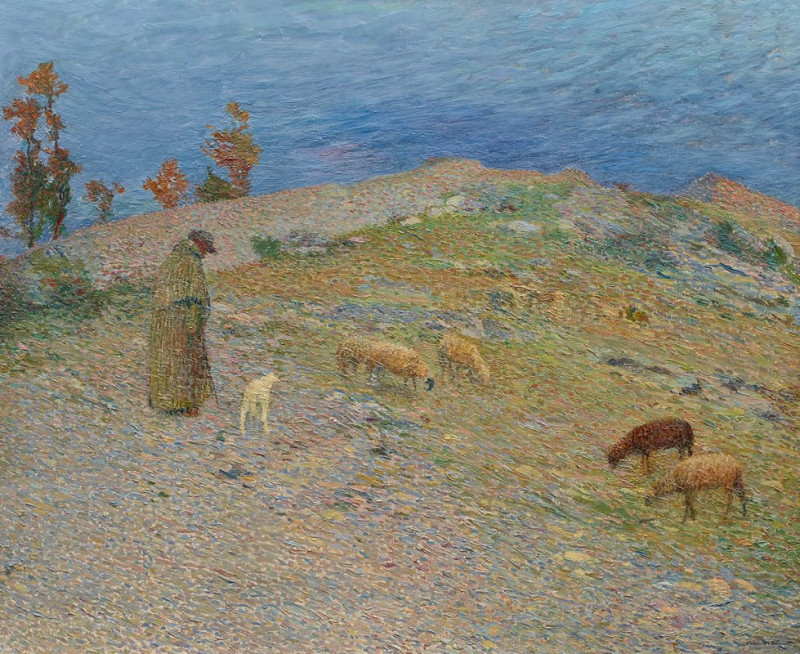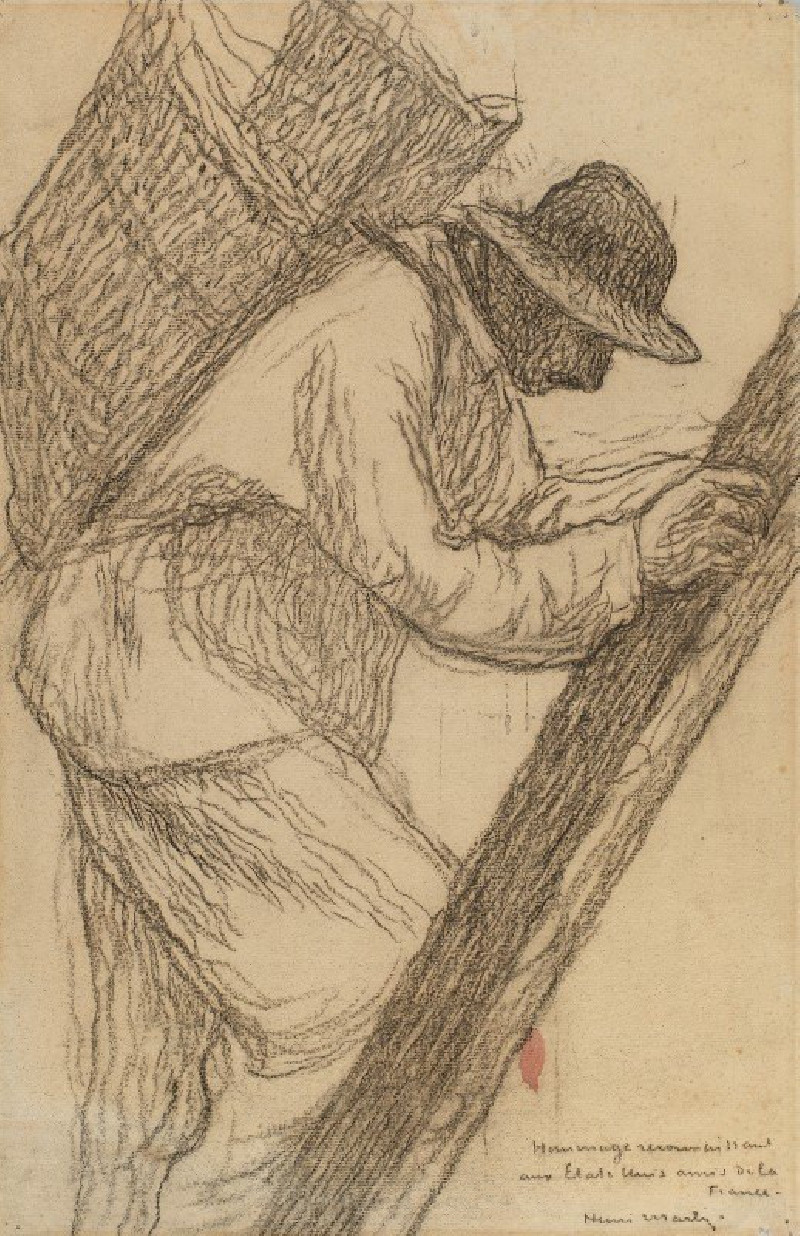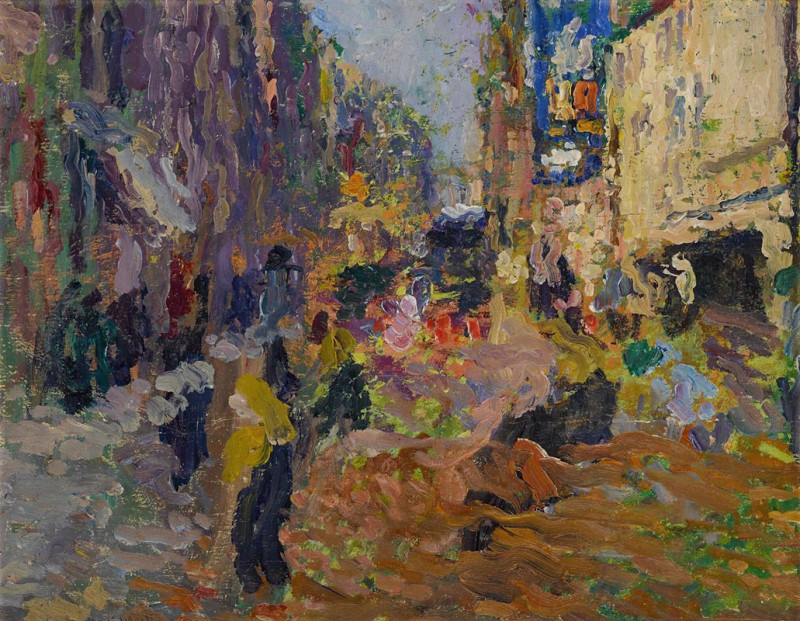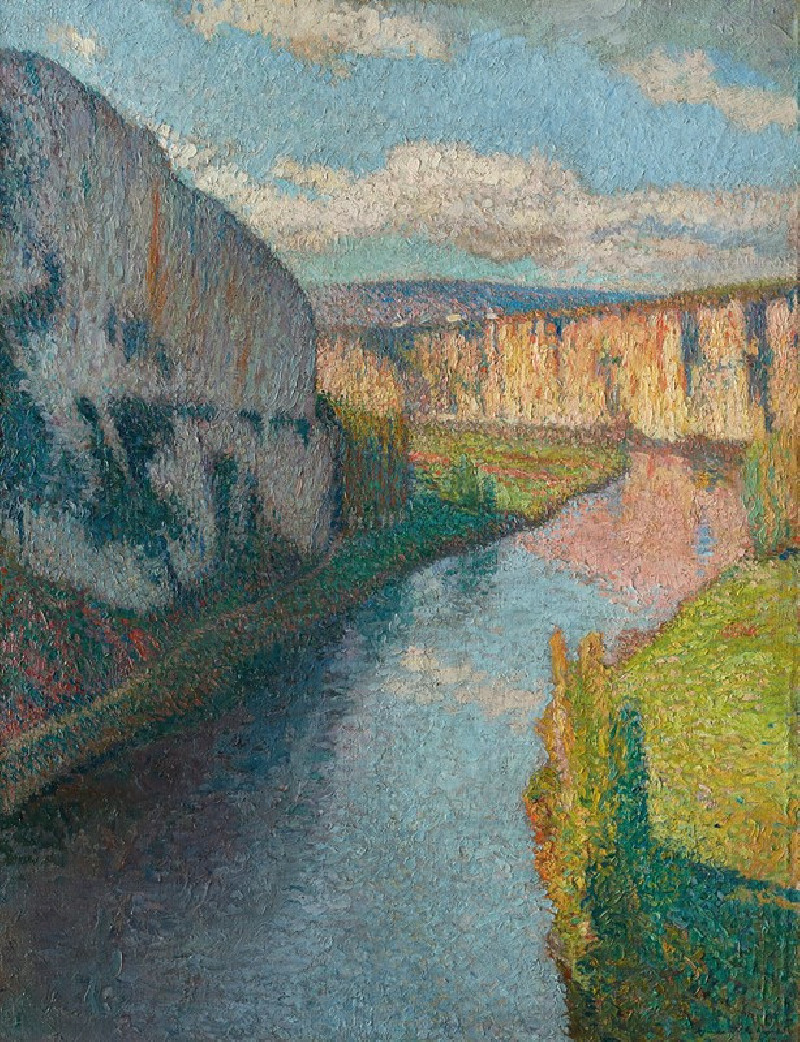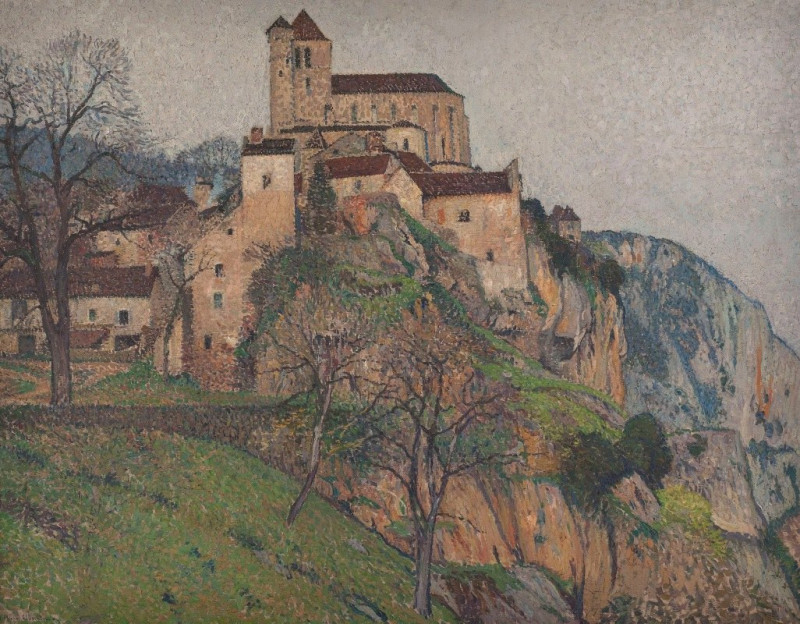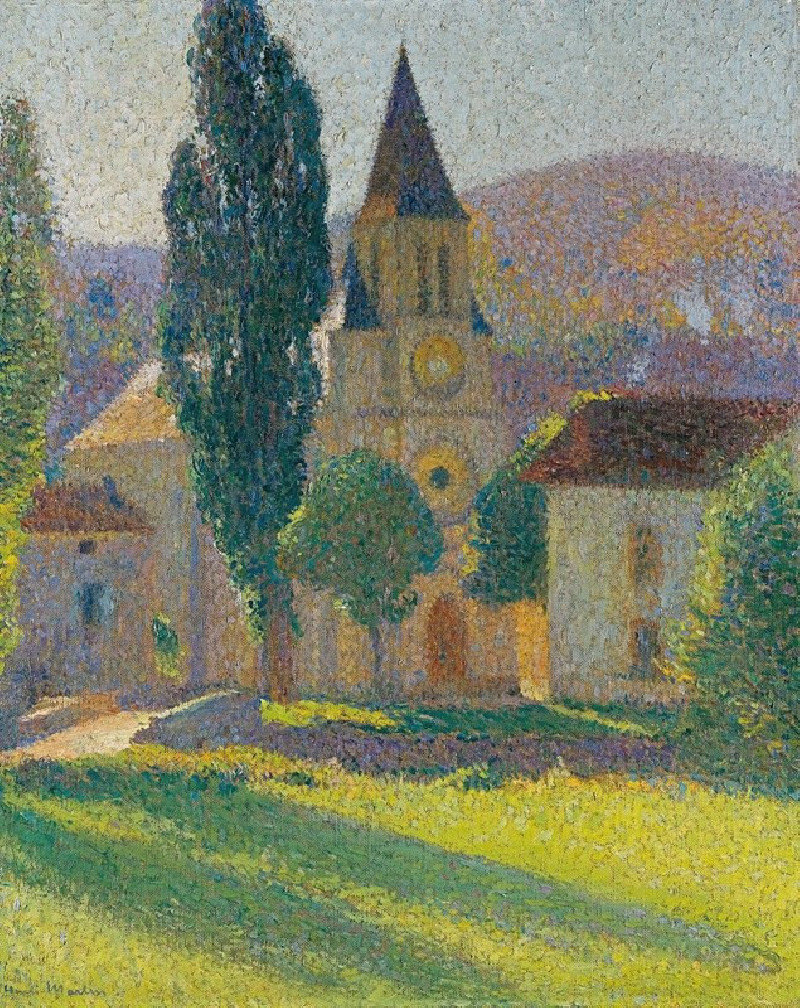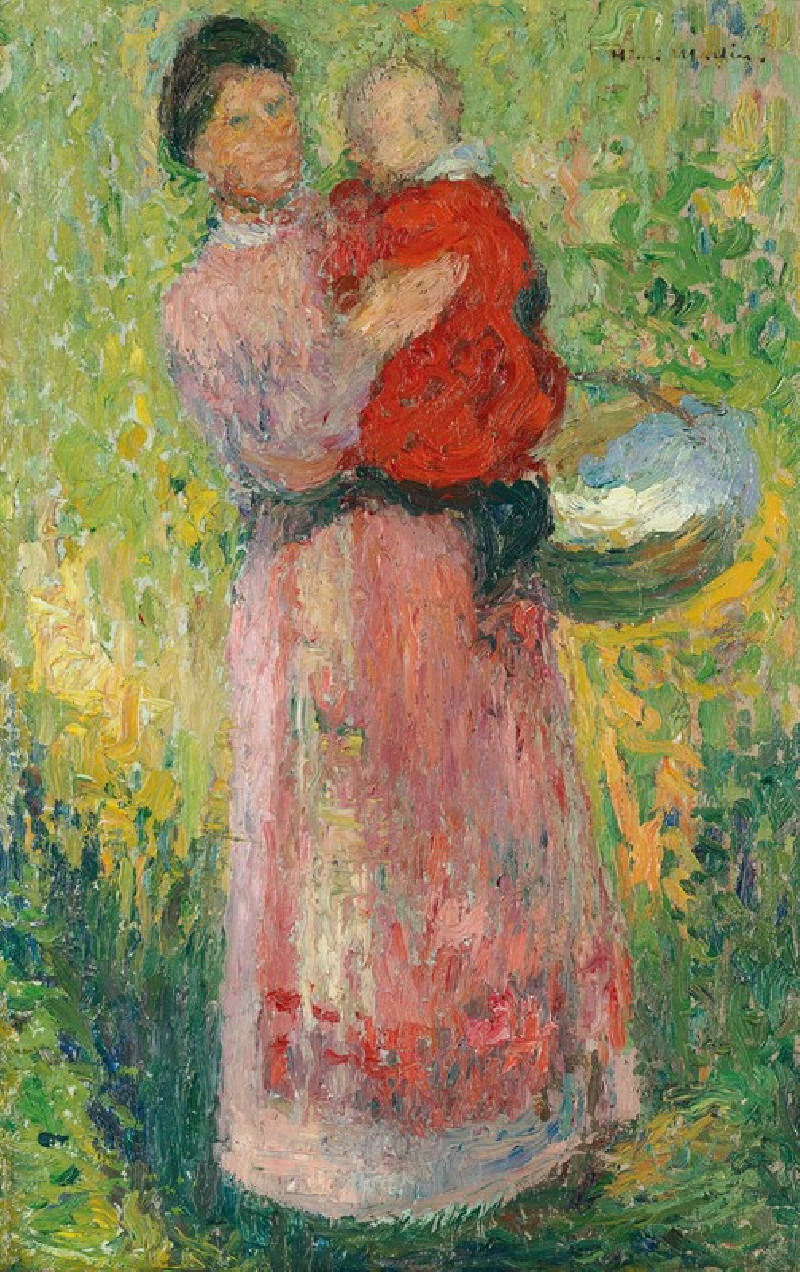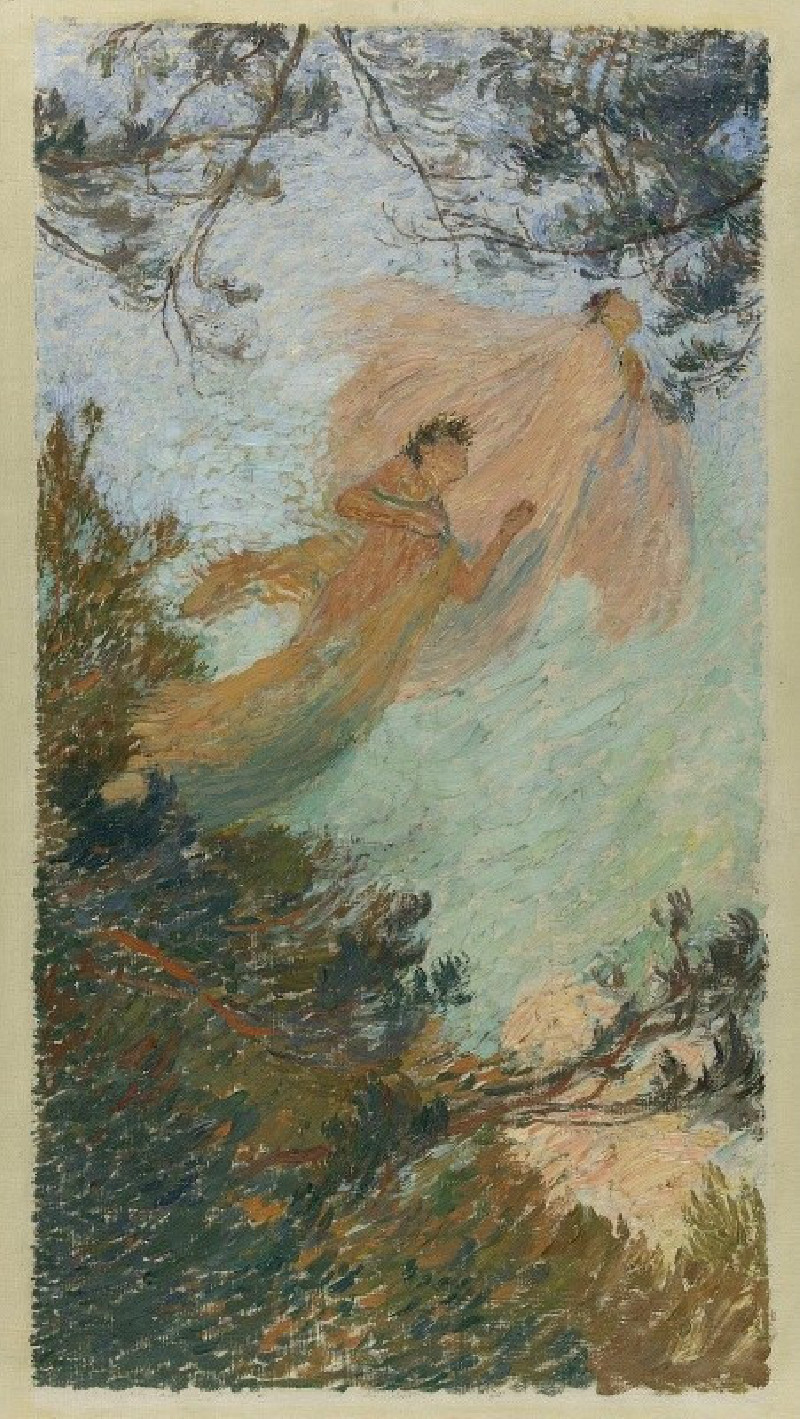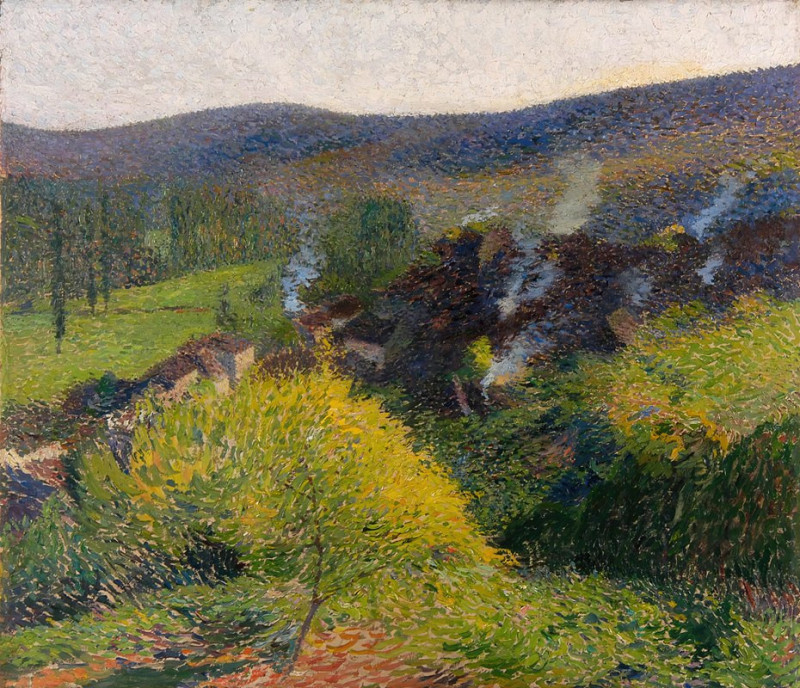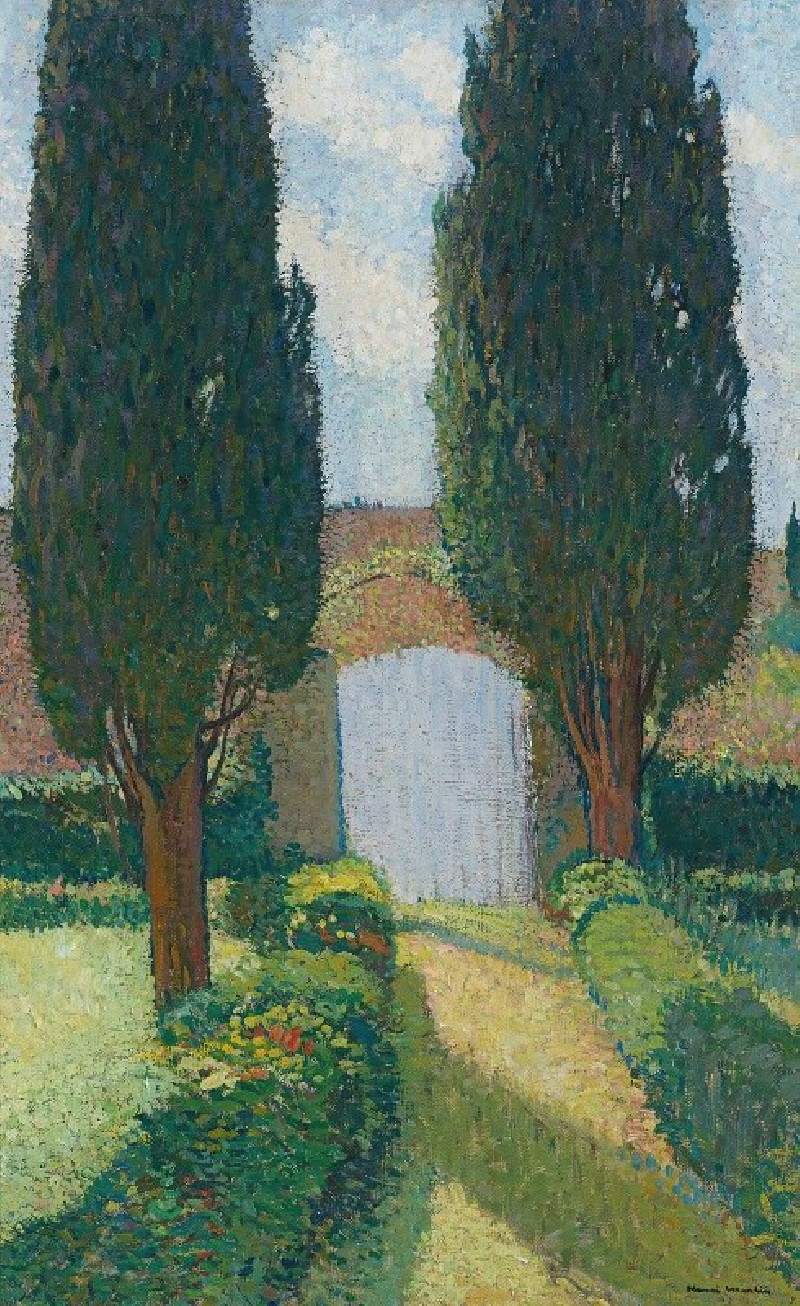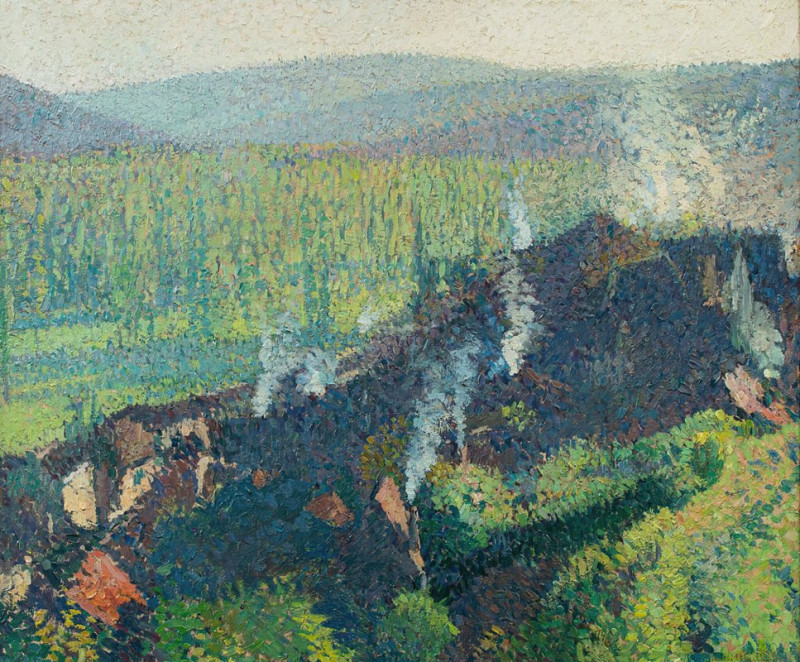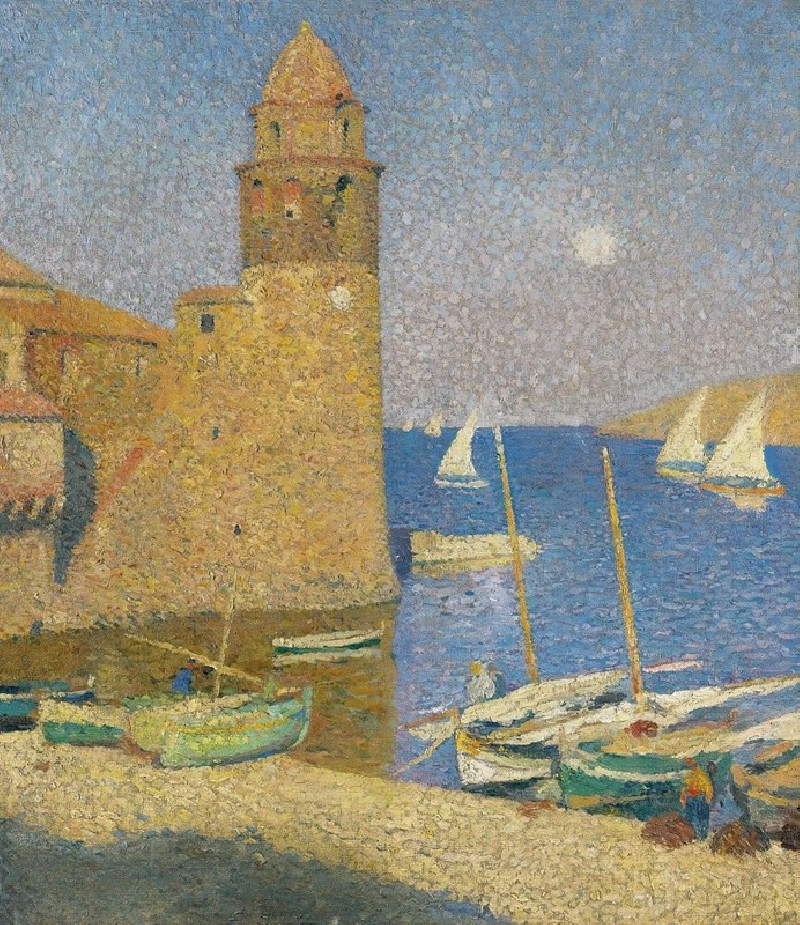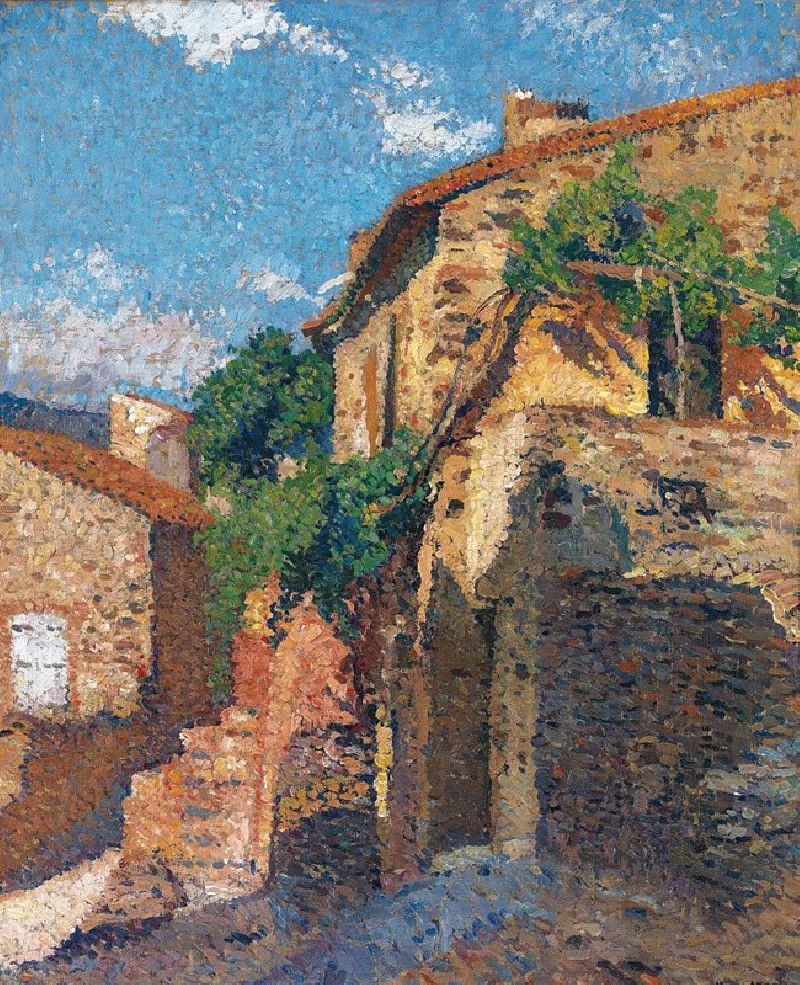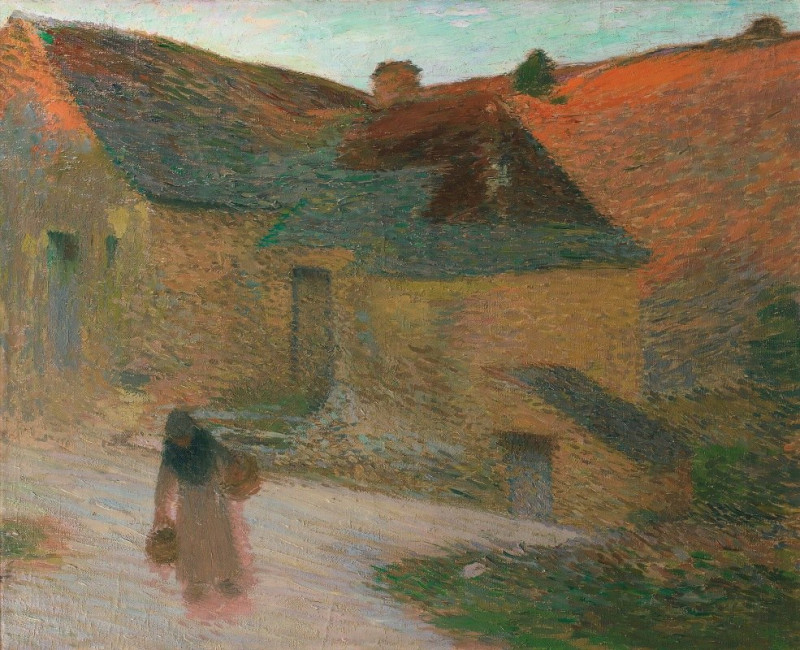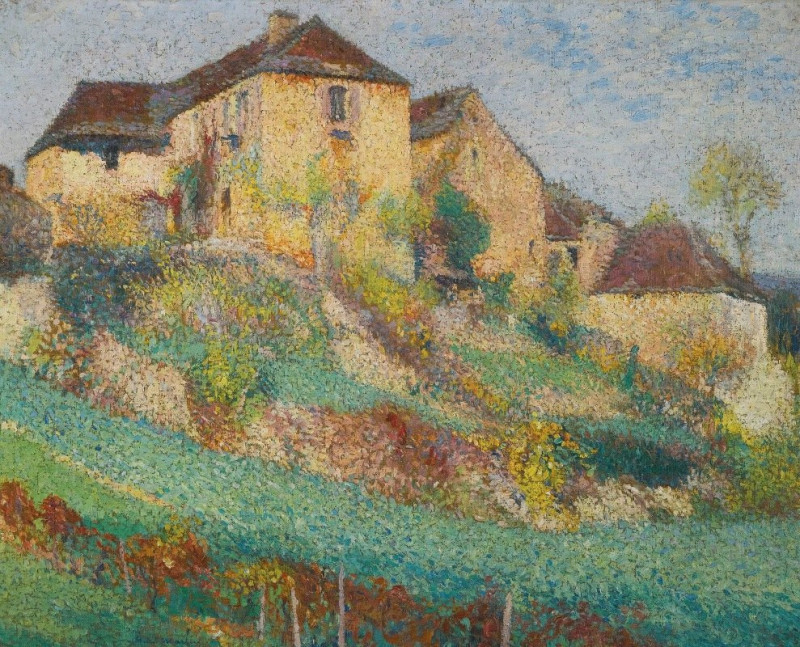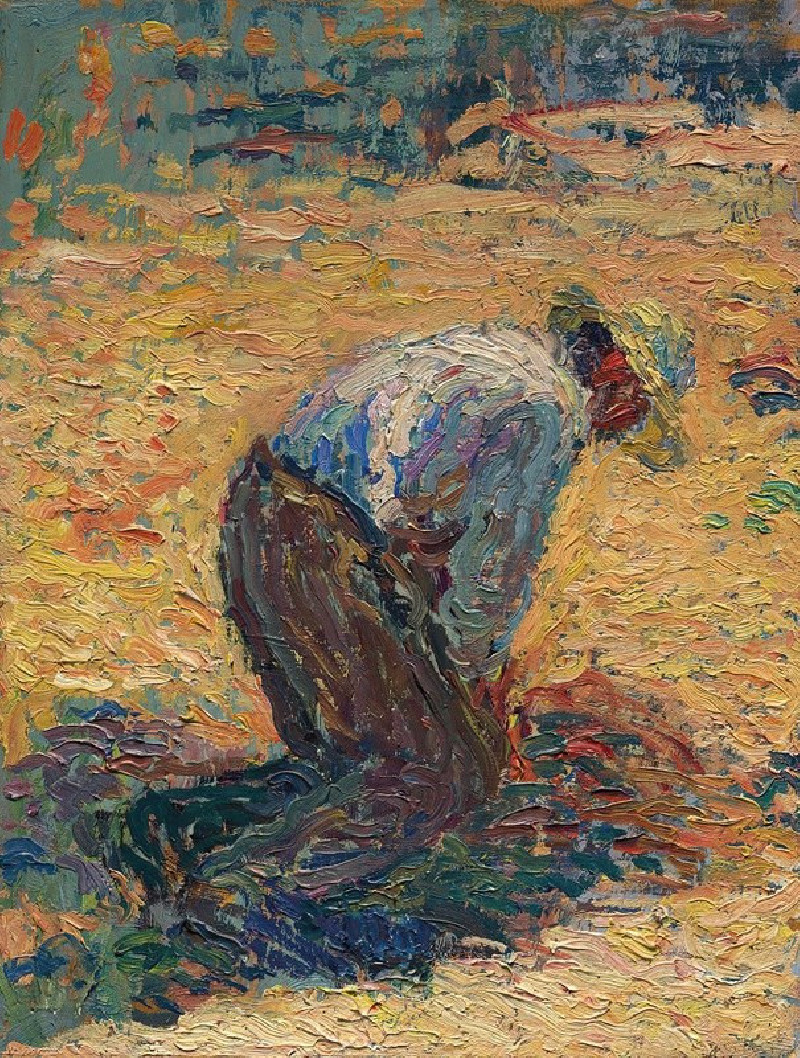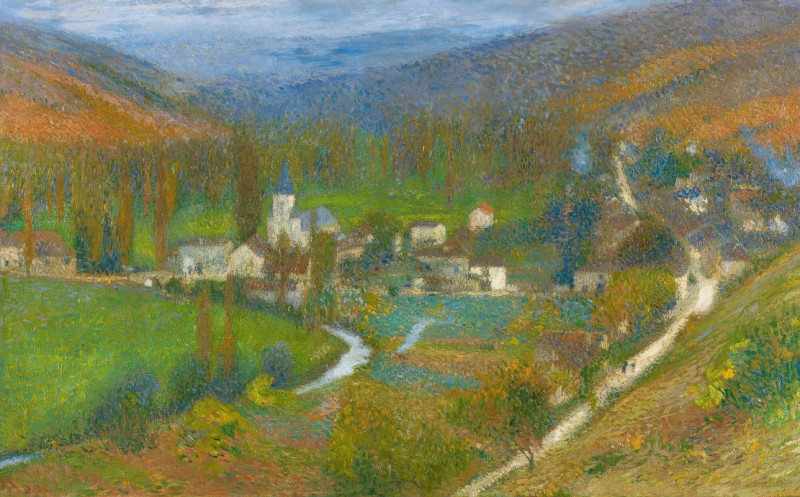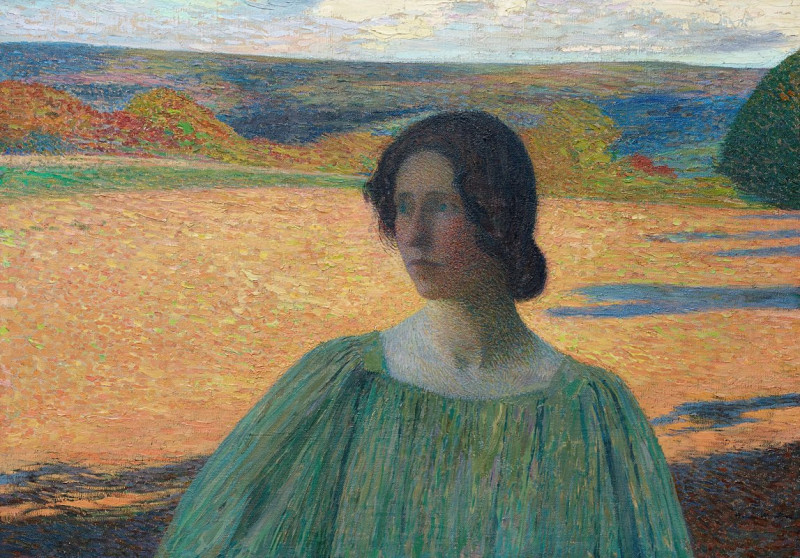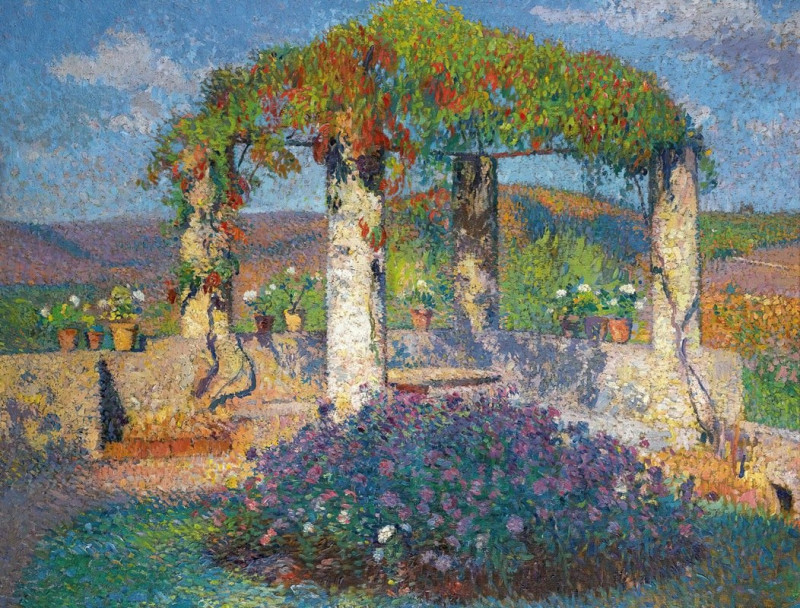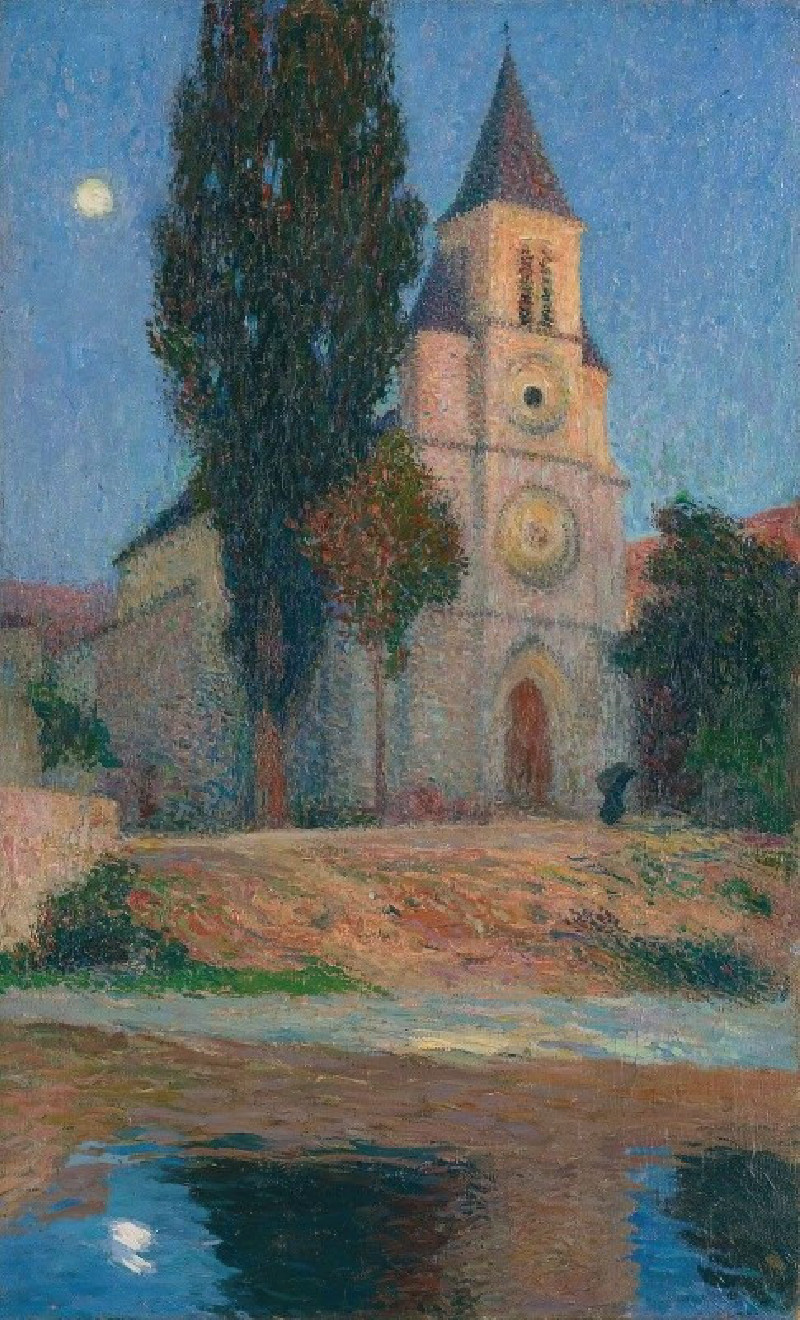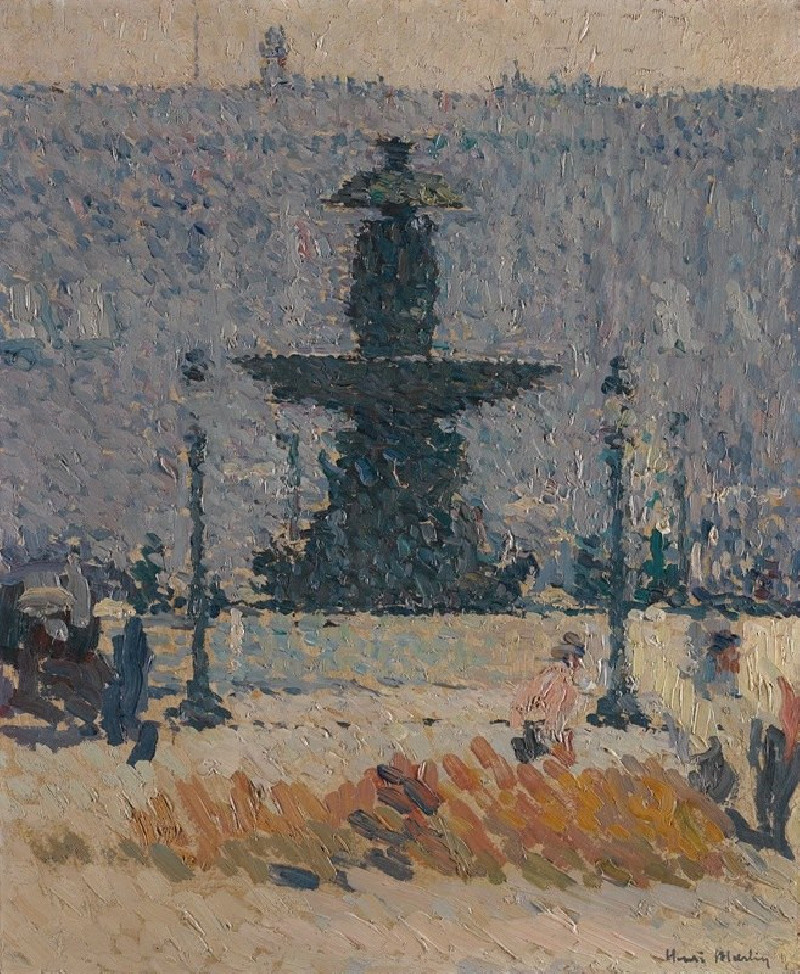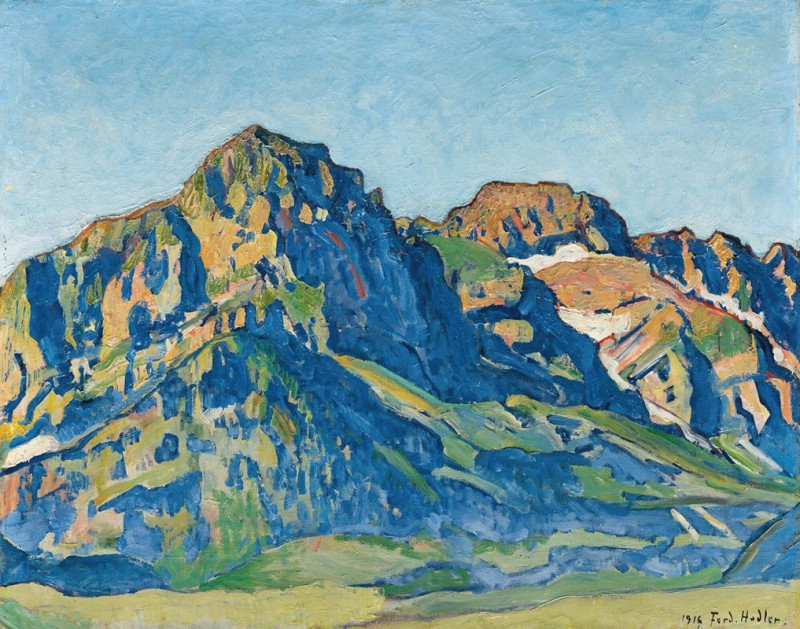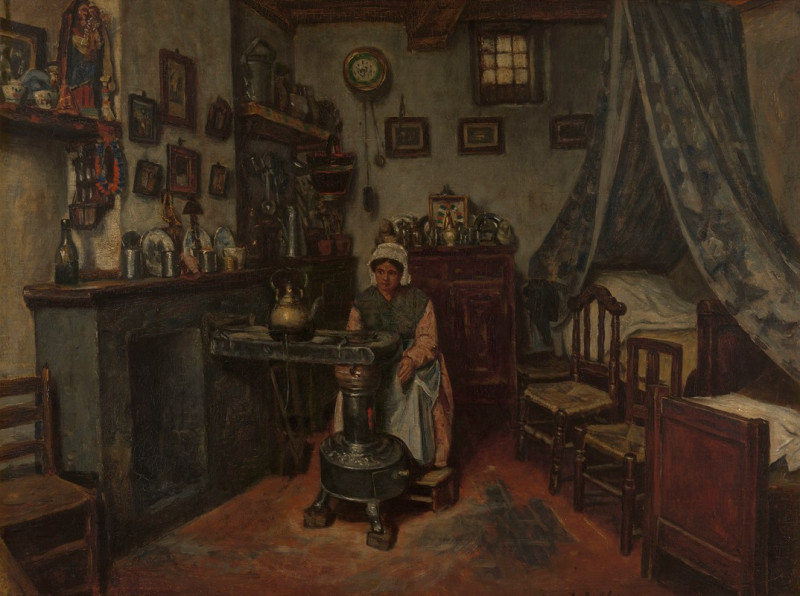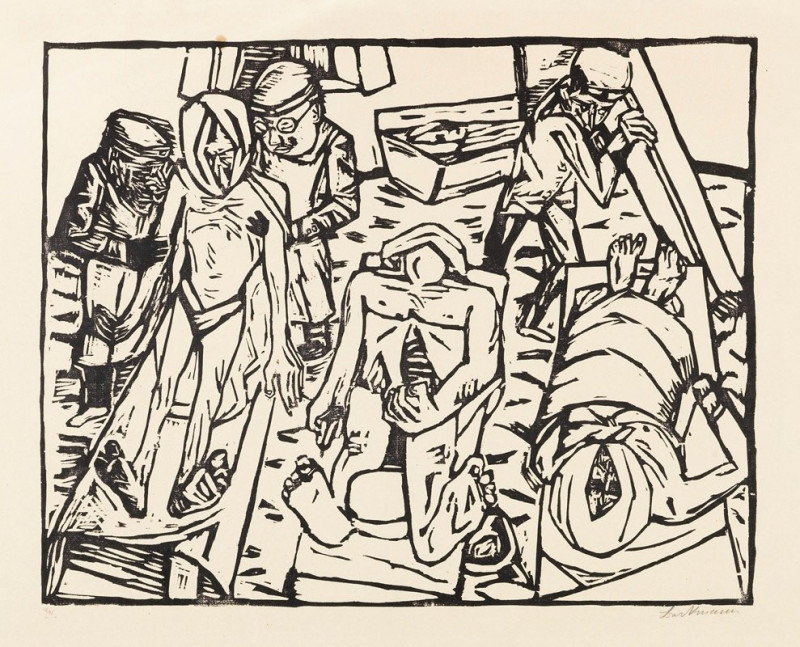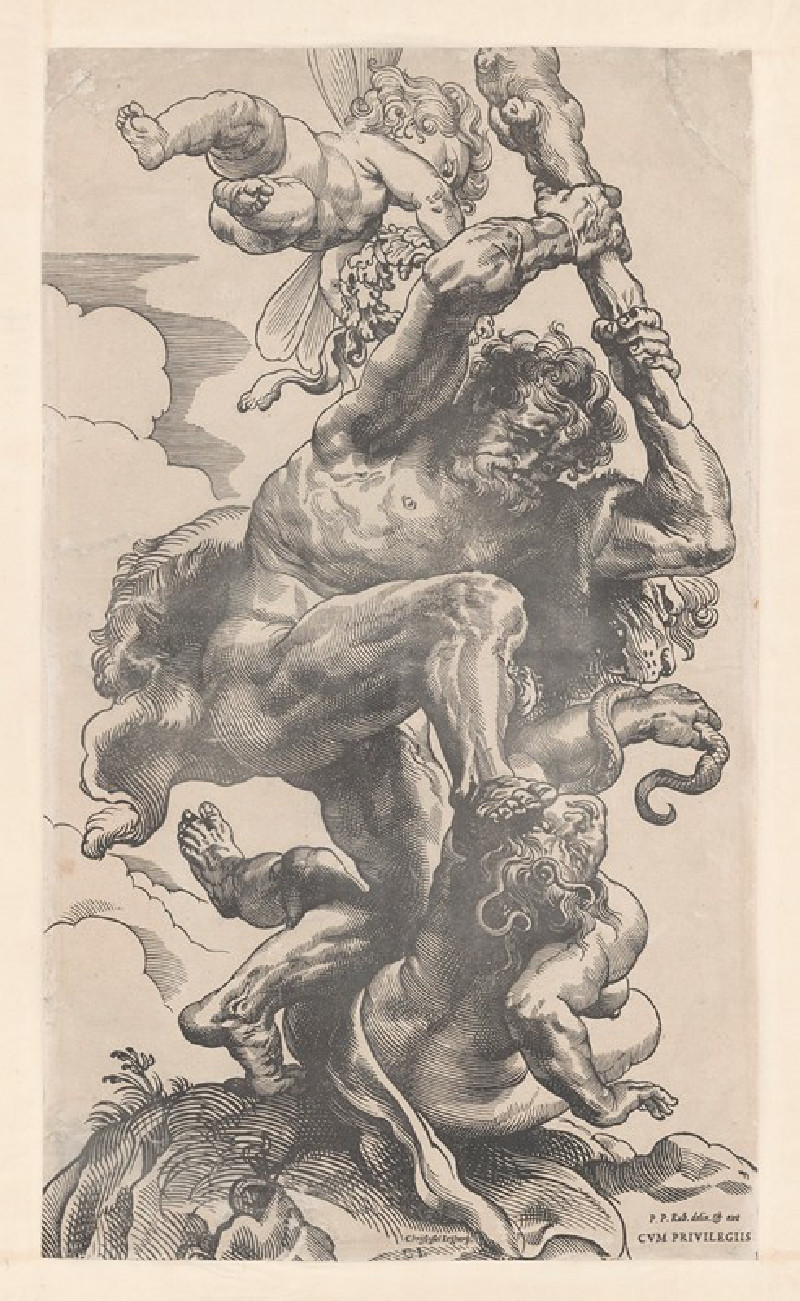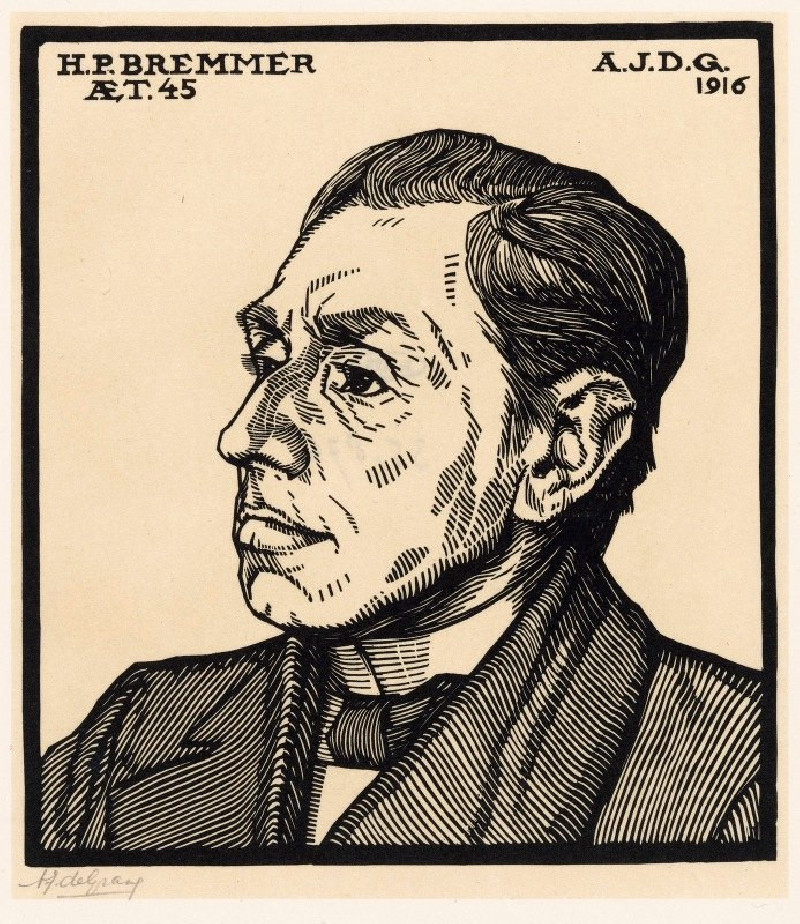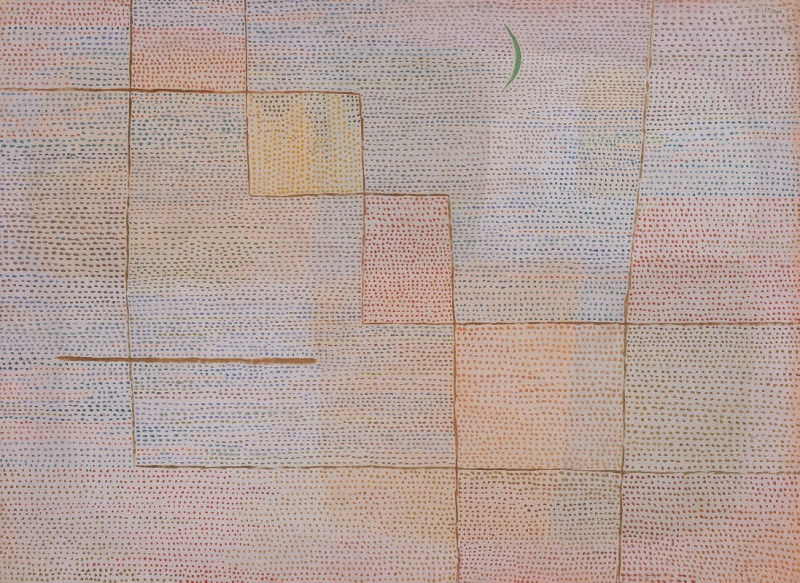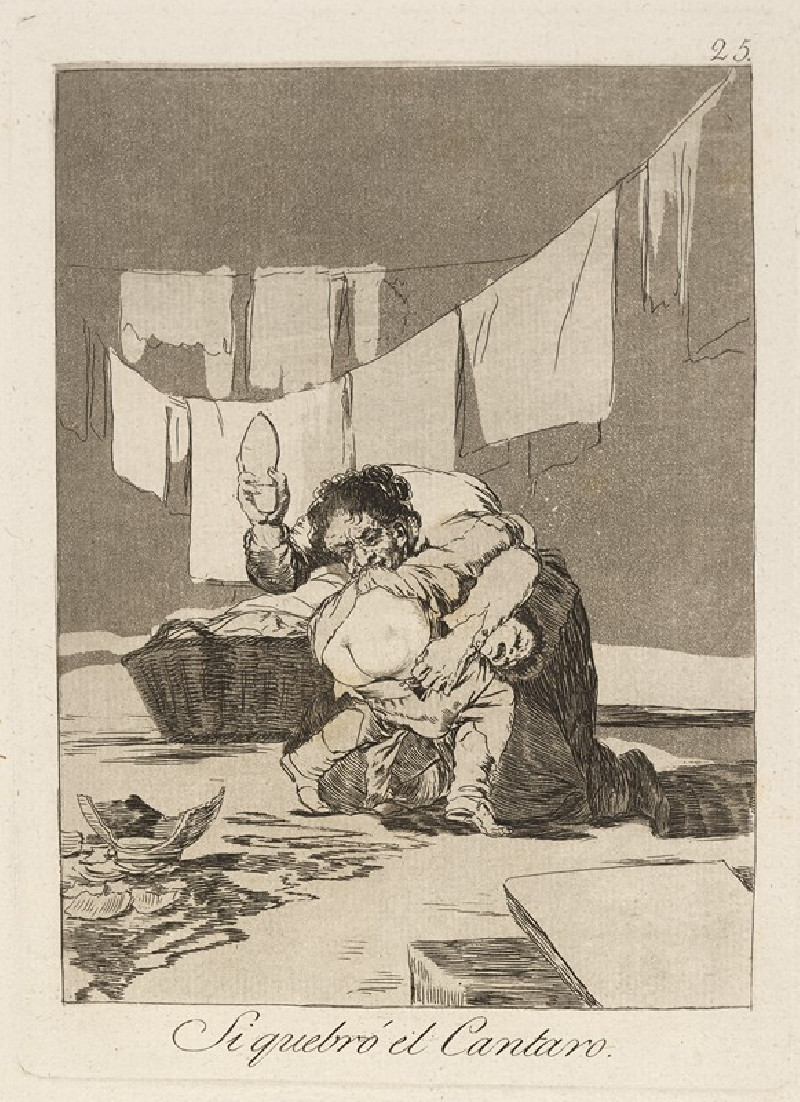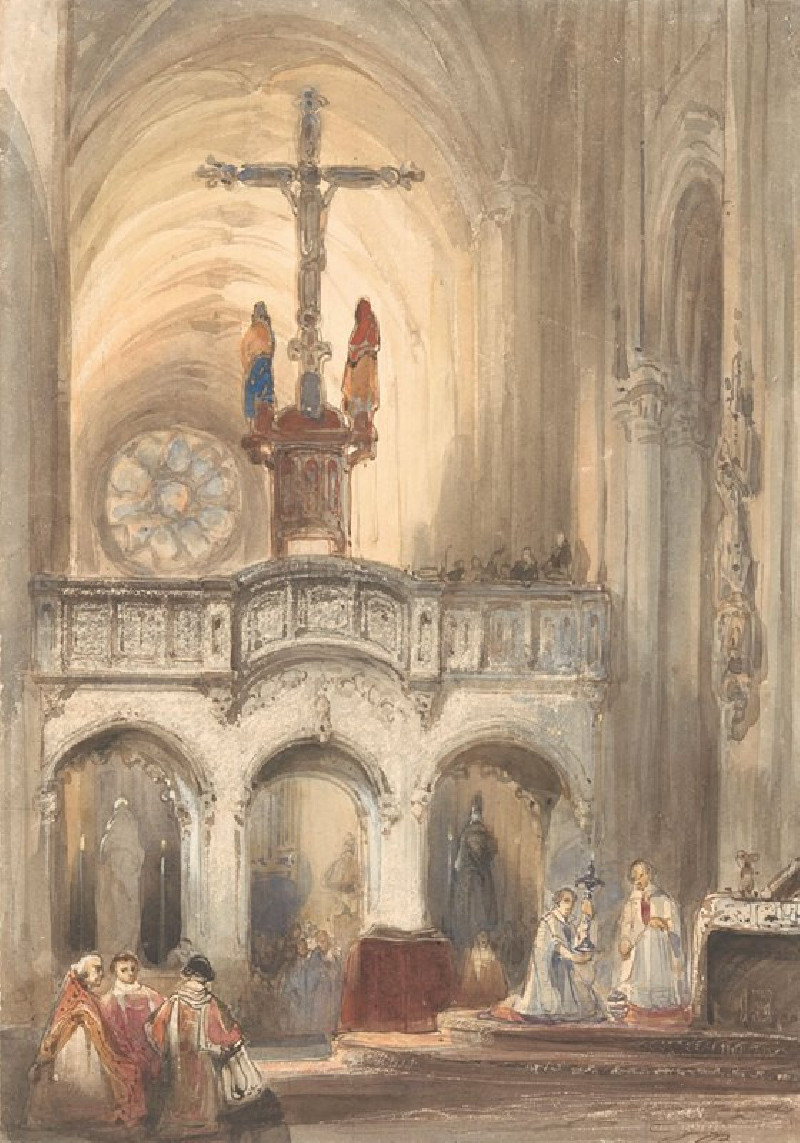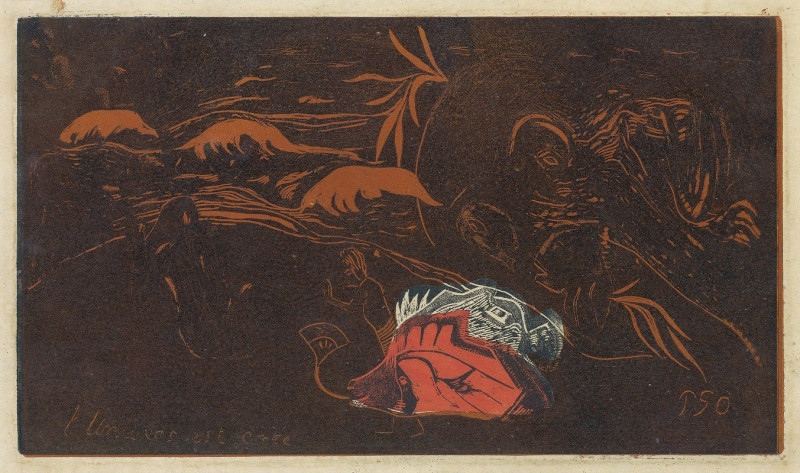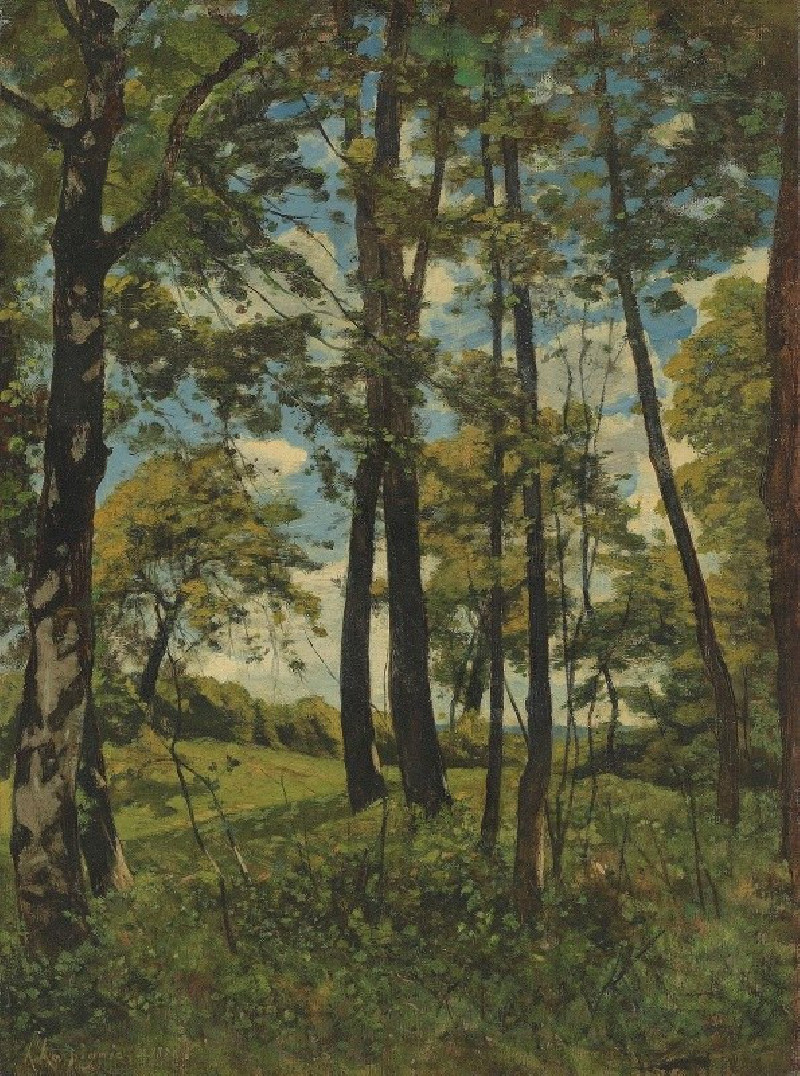La Fenêtre De La Cuisine Sur Le Jardin À Marquayrol (circa 1916)
Technique: Giclée quality print
Recommended by our customers
More about this artwork
Henri Martin's enchanting creation, "La Fenêtre De La Cuisine Sur Le Jardin À Marquayrol," painted circa 1916, offers viewers a tranquil glimpse into a lush garden scene. This visually captivating piece transports us to the artist's personal haven in Marquayrol, where the beauty of nature meets the comfort of home.The composition focuses on a garden as viewed from a kitchen window, where the gentle sway of lush greenery and blooming white flowers fills the foreground. A robust garden shutter, colored in subtle shades of blue and cream, invites the eye to explore the intricate play of light and shadow. This window not only frames our view but also connects us to the intimacy of indoor life peeking into the vibrancy of the outdoor world.Dominating the scene is a meticulously detailed bed of white roses, their delicate petals rendered with a luminous quality that seems almost tangible. Martin's use of pointillist technique is evident here, as he constructs the scene with a series of small, precise brushstrokes that collectively convey texture and depth.To the left, a statue stands quietly, adding a classical touch to the garden's naturalistic charm. The overall effect of the composition is one of peaceful contemplation, a snapshot of a moment both everyday and magical.Henri Martin's "La Fenêtre De La Cuisine Sur Le Jardin À Marquayrol" is a testament to the artist's profound connection to his surroundings and his mastery in expressing the serene beauty of the natural world through his distinct post-impressionist style.
Delivery
Returns
Henri-Jean Guillaume "Henri" Martin (5 August 1860 – 12 November 1943) was a French painter. Elected to the Académie des Beaux-Arts in 1917, he is known for his early 1920s work on the walls of the Salle de l'Assemblée générale, where the members of the Conseil d'État meet in the Palais-Royal in Paris. Other notable institutions that have featured his Post-Impressionist paintings in their halls through public procurement include the Élysée Palace, Sorbonne, Hôtel de Ville de Paris, Palais de Justice de Paris, as well as Capitole de Toulouse, although the Musée des Beaux-Arts de Bordeaux and Musée des Augustins also have sizeable public collections.


